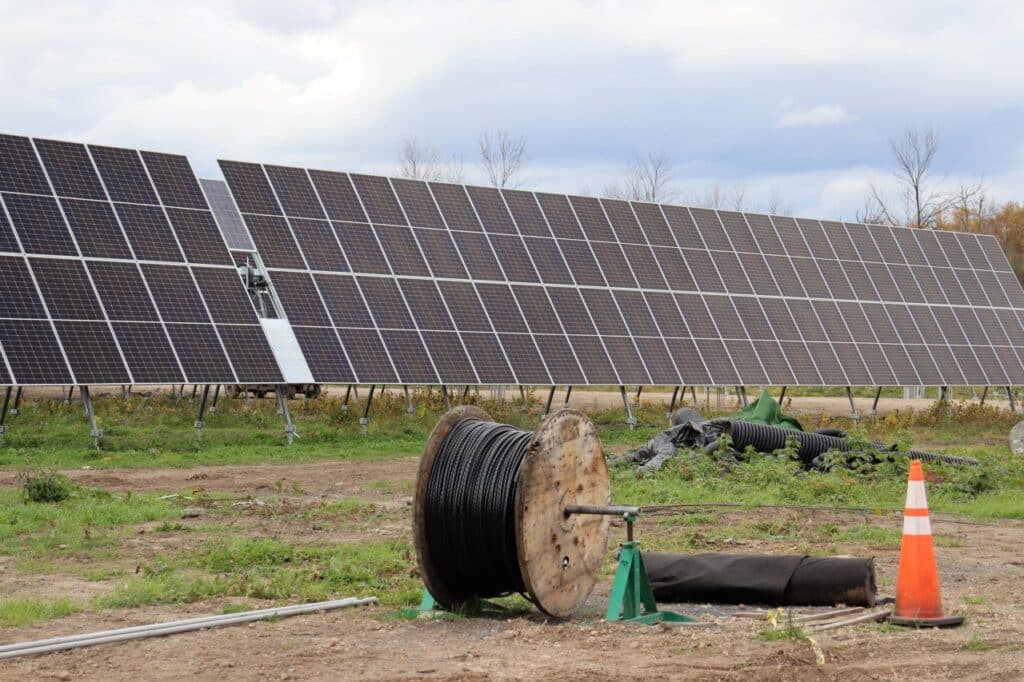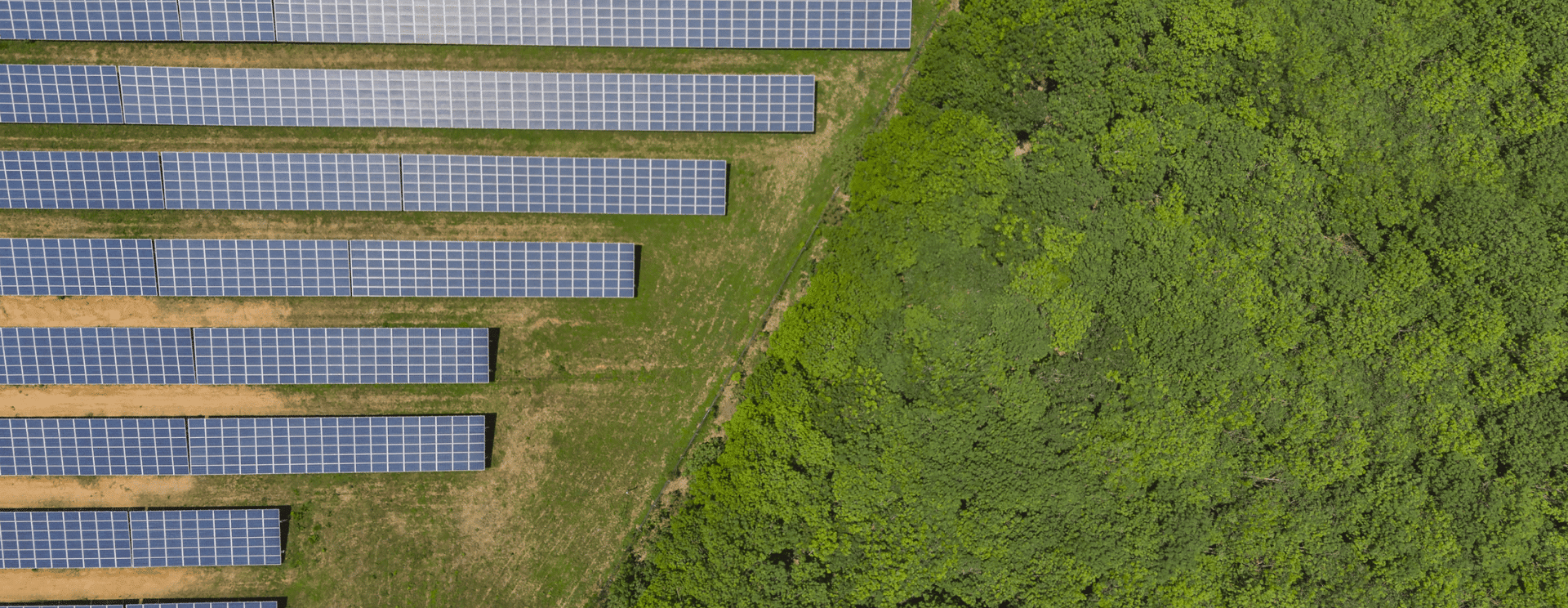Can Solar Energy Improve Microgrid Performance?

In 2003, a summer blackout caused by a severe storm cut power for more than 50 million people across eight U.S. states and parts of Canada.
Since then, the country has invested millions of dollars into resilience projects, ranging from hardening the electrical grid to moving transmission cables underground. It’s also given rise to the concept of the microgrid.
As companies, communities, and utilities inch closer toward renewable forms of energy, microgrids are becoming more popular. But what is a microgrid, and how does the rise of solar and other renewable sources impact their expansion? More importantly, can independent energy grids improve electrical delivery for the millions of people relying on it?
Microgrids Explained
If you’re unfamiliar with the term, a microgrid is a localized energy producer and provider connected to the larger power grid. It generates electricity to power communities, companies, and critical infrastructure and immediately disconnects from the larger grid to operate as a standalone power source during an emergency.
There are hundreds of these systems across the United States. According to the Department of Energy (DOE), there are 461 operational microgrids established across the country, powering everything from hospitals and universities to emergency shelters, research facilities, and military installations.
Other organizations are even more optimistic about the standalone grid’s adoption. The Center for Climate and Energy Solutions suggests nearly 700 operational microgrids are in the U.S., totaling 4.4 GW of electrical power. Meanwhile, Wood Mackenzie has said solar and storage capacity grew 47% from 2017 to 2022.
Why They Work
Microgrids work because they generate and distribute electricity to the surrounding community. Their size also makes them less vulnerable to widespread blackouts.
When large-scale outages occur, microgrids disconnect and enter standalone mode. Disconnecting from the grid lets the system deliver power while crews work on the larger grid.
Microgrids may have a home in combined heat and power (CHP) situations, too. CHP systems use one fuel source to produce electricity and heat for a building or group of buildings. Although they tend to be small systems powering a small area, larger ones can become microgrids once connected to the larger delivery system.
Are Microgrids Solely Solar?
Although they’re generally powered by renewable electricity generation systems like solar panels and wind turbines, fossil fuel generators can also power microgrids.
Beyond being inexpensive to maintain, solar microgrids tend to be set-it-and-forget-it options. When the system has an autonomous operation system, it can produce consistent and clean energy for years with minimal manual control.
Is Solar Power Generation Changing the Game?
Photovoltaic (PV) microgrids are coming online across the United States, but are they making a difference?
The short answer to the question is yes for several reasons.
Clean, Low-Cost Power
One of the major selling points of a solar-powered microgrid is that the electricity produced generates no harmful byproducts. Sunlight and wind are wholly renewable energy sources, reducing carbon footprints while maintaining energy production.
It’s Scalable
When communities or businesses want to increase the amount of energy, all they have to do is install additional panels and connect them to the system.
Beyond that, it’s possible to increase solar efficiency (and power generated) by installing solar concentrators, sun tracking systems, and anti-reflection coatings.
Low Operating Costs
Solar costs have dropped dramatically over the years, making installing solar panels as affordable as ever. Unfortunately, the soft costs of solar haven’t seen the same decline but are improving.
Though solar installations are still expensive for community and utility-scale projects, maintenance costs are low.
Combines with Other Energy Sources
Microgrids complement CHP systems, allowing them to make the most out of alternative fuel sources to produce additional electricity for storage or adding to the grid.
Typically, CHPs use a singular fuel source like natural gas to efficiently generate power and heat without wasting heat energy. Adding rooftop or on-site solar panels creates more energy, reducing strain and fuel use for the CHP system.
Another Step Toward a Revitalized Grid
Microgrids can reduce strain on the overall electrical grid.
As smaller operations come online, improvements must be made to the grid to improve its resiliency and accommodate the additional load. They also take some pressure off other power plants by reducing the amount of power they need to generate. In the case of demand spikes, those generation plants can quickly increase electrical output.
Another occasionally overlooked benefit of microgrids is their ability to deliver electricity more efficiently than other power plants. Typically, power generation plants are found in remote areas away from cities and towns, resulting in line losses as electricity flows from the plant to substations. Microgrids avoid most line losses because they are much closer to distribution areas. Less distance means less power loss during delivery.
Problems to Solve
Although there’s a lot to love about smaller, independent grids, there are still some kinks in the system.
Microgrids naturally make the electrical grid more complex because we’re adding new systems to an aging infrastructure. Upgrades are necessary to keep everything operating smoothly, but new interconnections come at a massive cost for installers and utilities.
There is also the risk of utilities seeing microgrids as competition, seeing as how the smaller systems could reduce demand. To minimize difficulties with utilities, installers can build mutually beneficial partnerships to find common ground and solutions.
Small Footprint, Huge Difference
The evidence is clear; as the grid becomes more complex, microgrids will step up to offer reliable, consistent power to homes and businesses nationwide.
Organizations like the NREL have invested in new grid technology and development for more than two decades, and the U.S. military is utilizing microgrids for both sustainability and self-defense. Additionally, smaller communities find community-scale solar installations a low-cost solution to rising energy costs through subscription and ownership stake plans.
We have so much to be excited about, but everything is still a work in progress. Regulations are hard to navigate, and there isn’t a standard set of rules guiding microgrid installers or the utilities they work with. Installers also have to contend with high interconnection costs as utilities decide how to compensate communities and customers for adding electricity to the grid.
Threats to the grid aren’t slowing down, making it vital for the U.S. to have a robust grid to supply power to everyone. Microgrids could be the answer to increasing reliability and safeguarding against future power outages, threats and attacks.


